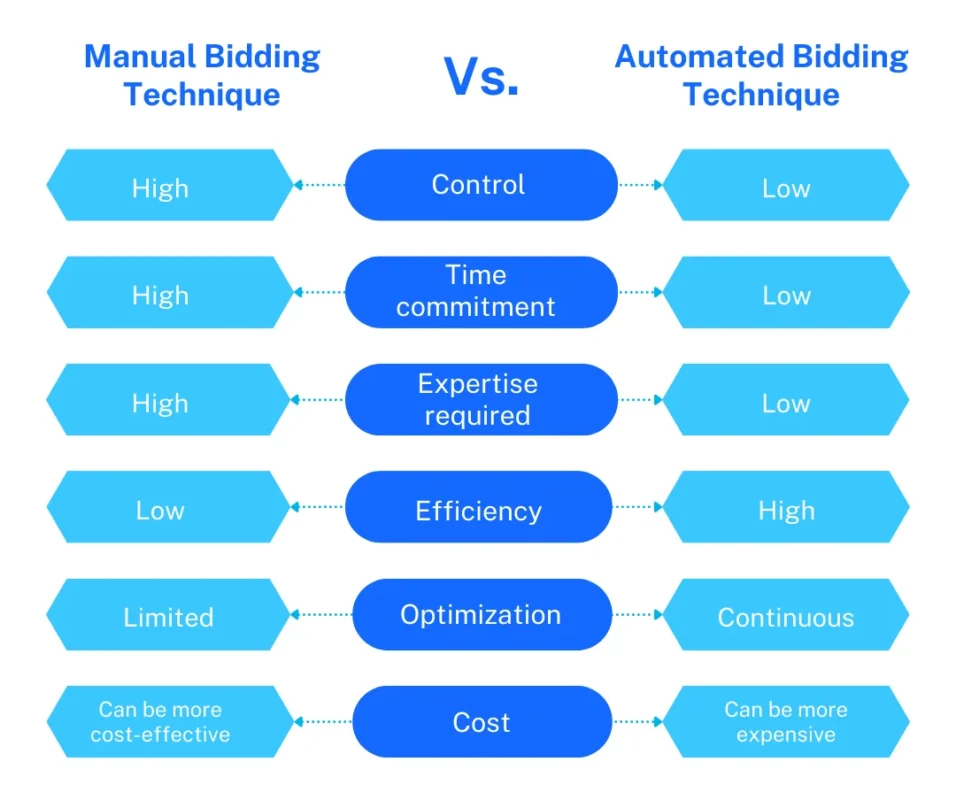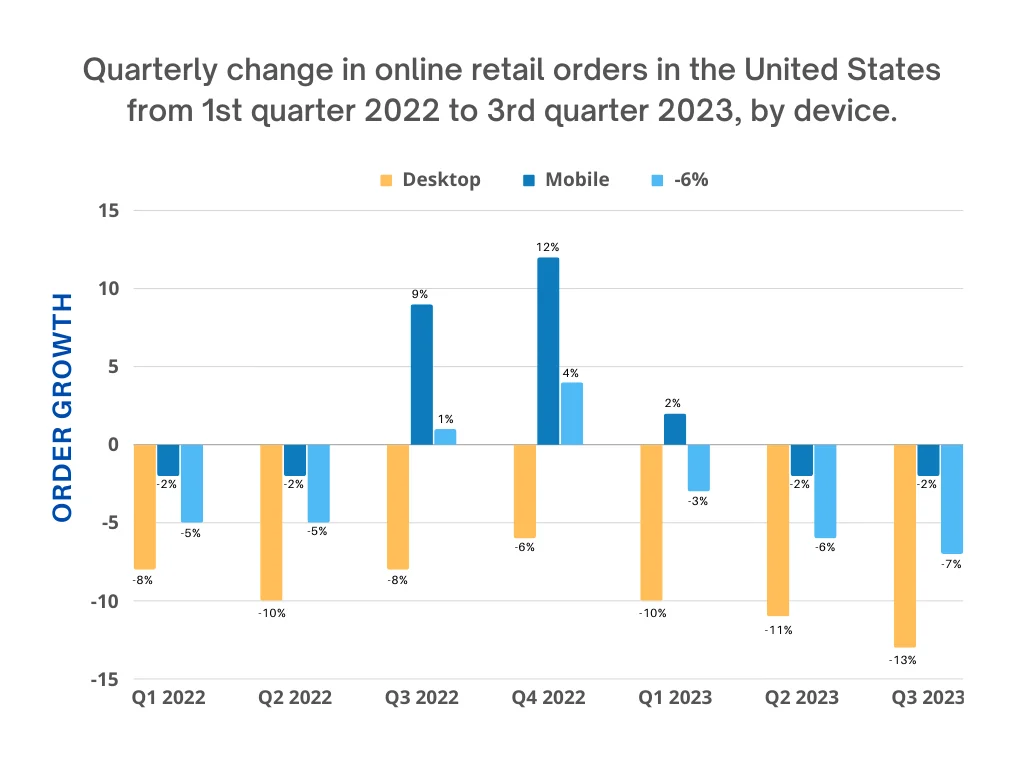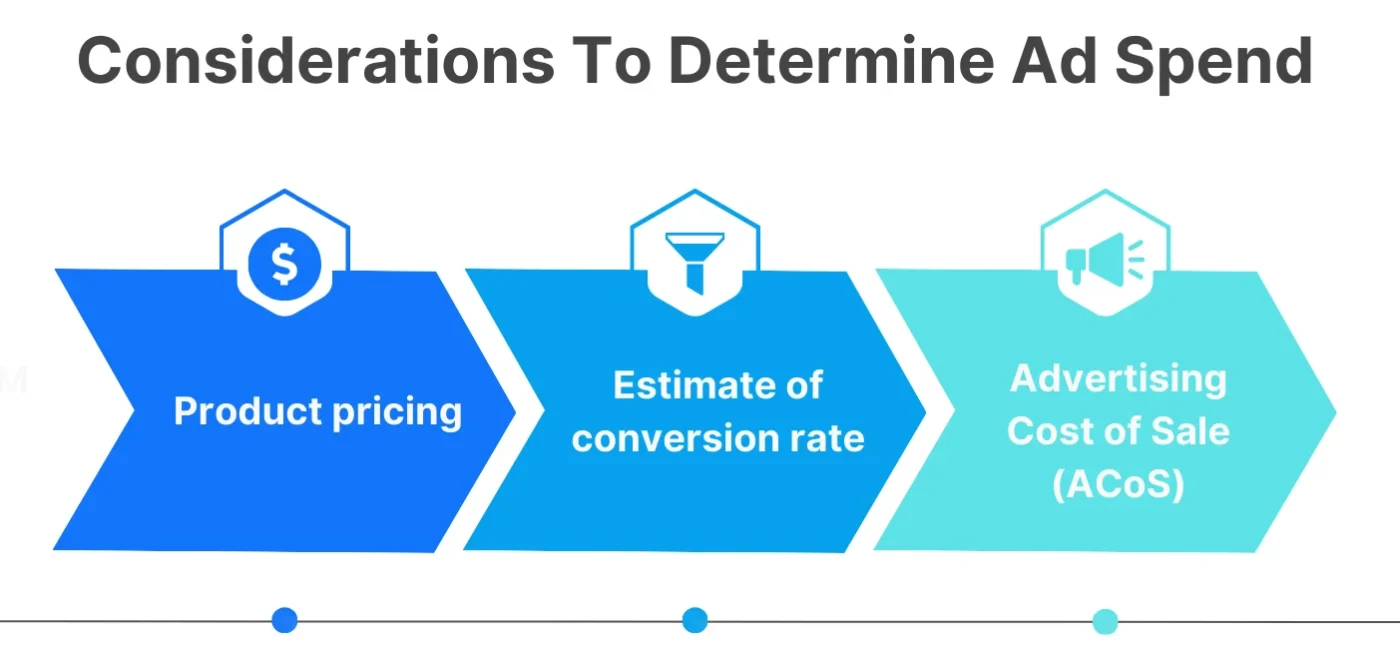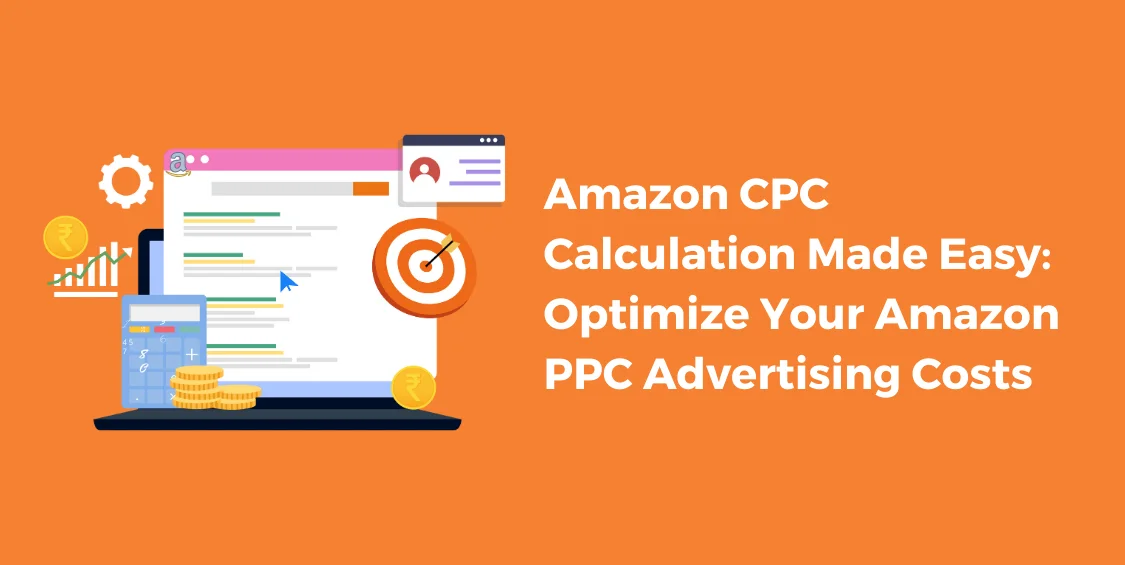What does Amazon PPC advertising cost? This is a common question among sellers who are new to Amazon Ads. Understanding what factors affect your Amazon PPC advertising cost is crucial, even though it could be challenging to establish first.
Ads displayed on websites or social media platforms are priced according to the number of hits they receive, a quantity known as CPC (cost per click). CPC is an essential metric for marketers since it quantifies the cost of a brand’s paid advertising efforts. To keep customers happy, marketers should lower the cost of clicks without sacrificing quality.
You can gain control over it if you understand what causes it.
Here on the blog, we’ll go over some ways to calculate your Amazon PPC advertising cost, some ways to think about it, and some ways to cut it.
What Is CPC In Amazon PPC Advertising?
This metric measures how much it costs to have an ad clicked on. All ad formats, including text, graphics, and videos, can be measured using this statistic. This includes display ads, ads on social media, and ads that appear on search engine results pages. Brands should include CPC considerations in their Sponsored Products best practices because determining the value of Amazon ads campaigns relies on bidding accurately on specific keywords.
How Is CPC Calculated In Amazon?
Cost-per-click, or CPC, is the typical amount spent on each click on an ad. The formula is as follows: total cost of clicks divided by total clicks. If an ad gets a lot of clicks, it means people are interested in what it offers. The sales, though, reveal an even more crucial figure. Amazon ads campaign are effective when the cost per click (CPC) is reasonable for sales.

Manual Vs. Automated Bidding Technique
The success of your Amazon PPC campaign heavily relies on how well you map out your bidding strategy. The more detailed and well-planned your strategy, the more promising ROI, visibility, and sales growth you’ll get out of your total ads spend. Manual and Automated bidding techniques have pros and cons; it’s up to you or your Amazon PPC management expert to decide which will help you reach your business goals.

Manual Targeting
Manual targeting may be a viable option if you’re an experienced seller with keen PPC knowledge or have hired a reliable Amazon PPC agency. As the name suggests, in this type of targeting, you manually choose the keywords to bid on which you think your target audience is more likely to search.
As this type of ad requires manual bidding, your Amazon PPC management expert will need to constantly monitor and adjust the cost of ad spend and update keywords.
Automated Targeting
Amazon will target keywords relevant to your product listing as part of its automated ad bidding. It will gradually adapt the advertising to your listing based on customer clicks and purchase data to increase conversions.
You can choose four types of keyword match:
- Close match ads: Appear when the buyer writes the search terms closely related to the product you’re advertising.
- Loose match ads: Your ad shows up when buyers type in keywords that loosely represent your product.
- Substitutes: Focus on shoppers buying products similar to your product but from a different brand, e.g., ABC lip tint and XYZ lip tint.
- Complements: Focus and target shoppers viewing product listings that are or can be used with your product, such as toothpaste with a toothbrush.
Factors Affecting CPC of Amazon PPC Advertising
Data from 2020 shows that the average cost of Amazon PPC advertising in the US increased from $0.78 to $1.21 in 2021, a rise of about 50% from the previous year.
The trend has persisted into the third quarter of 2022, with CPCs for Sponsored Brands Ads and Product Ads increasing by 4% and 5%, respectively.
Surprisingly, 59% of Amazon sellers anticipate CPC to keep climbing in the years to come. Let’s dig into some prominent reasons as to why this is so.

Source: adbadger.com
More Brands are Widely adopting Amazon PPC Advertising
With over two and a half billion unique visits every month, Amazon is by far the most popular online marketplace in the world. It’s hardly surprising that the site is the starting point for product searches for the majority of shoppers, about 50%.
Amazon has a massive user base, but only some of it offers. The platform’s cost-per-click (CPC) is far lower than other ad networks like Google and Facebook.

Amazon has the lowest global average CPC at $0.75, far lower than Facebook’s $1.35 and Google’s $2.32.
Customers’ Changing Purchasing Habits: Mobile-shopping
Not surprisingly, an increasing number of customers opt to shop online using their phones, given the dominance of mobile devices in internet access. Statista reports that in Q3 2022, online retail orders placed through mobile devices increased by 7%, while those placed through desktop computers decreased by 7%.
This change towards mobile-first shopping behavior has dramatically affected how sellers plan their Amazon ads campaign to reach customers.
Leveraging Sponsored Product ads in search results on the Amazon mobile app makes it more difficult for customers to differentiate between organic and paid listings.

Source: Statista
Over the past three quarters, there has been a decline in the amount of online retail orders in the US. The mobile channel saw the smallest decline, at 2% in the most recent recorded quarter, when comparing orders fulfilled via desktop and mobile devices.
Aggressive Bidding By The New Sellers To Compete With The Established Brands
Due to the intense competition, smaller firms frequently need help trying to compete on Amazon.
The most fantastic deals on the platform would only be possible amidst 1000s of search results with Amazon PPC advertising.
Many small sellers are ready to risk Amazon’s profit margins for ad space to increase product visibility and attract more customers.
Because of this, the platform’s average cost per click (CPC) has been rising over time, making it harder for brands to have their products.
Tips To Optimize Amazon CPC
The success of your Amazon ads campaign is deeply related to the lower CPC of your Amazon PPC advertising. To rank, receive clicks, and enhance conversion rates, your pay-per-click ads must be algorithm-optimized and appealing to prospective consumers.
So, to maximize sales while keeping CPC low, here is how to effectively manage your Amazon PPC advertising:
Strategize Your Amazon Ads Campaign With Amazon PPC Management Experts
A well-planned Amazon PPC campaign is essential to attract more customers and boost conversion rates. If you can keep up your stellar performance for a long time, it means your strategy is working.
Do your math ahead of time to get things rolling. Find out how much money you’ll spend on the Amazon ads campaign, examine and compute your search term bids, and modify your keywords according to their profitability.

Alter Your Bids And Reset Ad Budget When Necessary
You shouldn’t make hasty choices about your Amazon PPC advertising budget or expense. You won’t know how to optimize your product advertisements or the full potential of your ads if you make a budget change two or three days after starting your first Amazon ads campaign.
Before making any changes to your Amazon PPC advertising budget, wait a week or two to ensure you have enough data for your study. You should give any pertinent PPC data at least a month to mature before seeing keyword optimization data for manual Amazon ads campaigns.
Target Your Product’s Compliments
Pay close attention to more than just the search terms report. Additional sources for ASINs include the Item Comparison and Market Basket Analysis reports. To access this, you must first join the Amazon Brand Registry.
All items bought from your store may be found in the Market Basket Analysis report. To make it happen again, try targeting these, but this time, your Amazon ads campaign will show up in the “Sponsored Products related to this item” area. Therefore, “market basket.”
Snag the Best-Performing ASINs for your Products
Locate and target competing companies that receive a lot of attention. In this manner, you may increase the likelihood that people will notice your brand when they search for popular categories related to it. What factors contribute to the popularity of a brand or product? Sort the columns labeled “Clicks” and “Click-through-rate” (CTR) in the search terms report from highest to lowest.
You can also focus on related areas to increase your chances of making a sale. If you own a sportswear store, you might aim your Amazon ads campaigns toward the category that sells energy drinks and exercise equipment.
Conclusion:
Maximizing your Amazon PPC advertising expenditure using ACoS and its underlying metrics should be your goal, even if several factors contribute to calculating the Amazon ads campaign cost.
Optimizing your Amazon ads campaigns, keywords, and ad types can help you acquire a more affordable audience. Once you’ve recognized this, you can update your content and increase your average order value (AOV) to make the most of that traffic.
Testing your Amazon ads campaign gets much easier once you start seeing it from this perspective. You can automate campaign optimization or hire a reliable Amazon PPC agency if you still need help meeting your goal ACoS or getting the most out of your Amazon PPC advertising budget.
Learn more about optimizing Amazon PPC management to make the most out of your ad spending limit. Partner with the leading Amazon PPC agency, AMZDUDES, to ensure your ads are handled only by Amazon PPC management experts! Book a consultation with one of our seasoned Amazon PPC management experts today!





